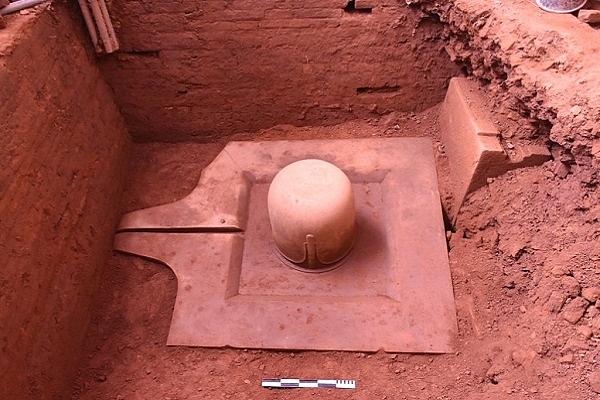
Shiv Linga Discovery In Vietnam: How India Is Reaffirming Civilisational Connect With South-East Asia
A monolithic sandstone Shivalinga from the 9th century CE was recently excavated by Archaeological Survey of India (ASI) at My Son in central Vietnam.
The Minister of External Affairs S Jaishankar congratulated the ASI on the discovery and applauded it’s ongoing conservation project at the Cham Temple complex. He also said that the project was “reaffirming a civilisational connect”.
What is Cham Temple complex?
It is a cluster of ancient Hindu temples in Quảng Nam province in central Vietnam. The temples aren’t in use anymore and partially ruined.
The architecture is influenced by Southern Indian temple architecture, and is a UNESCO World Heritage Site. Last year, Vietnam celebrated 20th anniversary of the declaration of ‘My Son’ as the World Heritage site.
The temple complex dates back to the Champa civilization or the Cham civilization that flourished in central Vietnam over 2,000 years ago.
The oldest Cham artifacts — brick flooring, sandstone pillars and pottery found at Tra Kieu in Quang Nam Province — date to the second century A.D, according to a National Geographic report.
Apart from red-brick temples known as Cham towers, the language and cities with names like Indrapura, Simhapura, Amaravati, Vijaya and Panduranga are a legacy of the Cham civilisation.
Several Cham citadels, around 25 temple sites with varying numbers of towers have been found by the archaeologists still standing along Vietnam's coast.
It is estimated that hundreds of such sites might be lining the rivers (river-banks have been a site of choice for temple construction in Hinduism) leading into the Central Highlands and beyond to eastern Cambodia and Laos.
The people of Cham civilisation followed Shaivaite Hinduism and were skilled in seamanship and building. They had a vast trade network, with routes extending to present day India, Africa, China, Taiwan, Japan and south to Malaysia and Indonesia, and were renowned for their wealth.
The civilisational connect between India and Vietnam is also significant as the mixing of cultures was not premised on political or military force, but extensive trade relations and people-to-people ties, especially Indian merchants.
How is India reaffirming its civilisational connect?
Experts from the ASI are currently working on conservation and restoration of groups of temples at the My Son temple complex.
Reportedly, the Management Board of My Son, Vietnam is pleased with ASI’s work and wants it to undertake the restoration another group of temples.
ASI is carrying out similar conservation projects in other South Asian countries.
One is Vat Phou temple, dating back to 5th Century AD located in the Champasak Province of Lao PDR on the slopes of Phou Kao Mountain.
The mountain is named as Lingaparvatha in Sanskrit — known as the home of Shiva with its natural stone Linga at top and the Mekong River representing the River Ganga and the surrounding universal ocean.
The ASI has been involved in conservation and restoration of this monument since 2009. The temple structure also has depiction of several Yoga Mudras and the ASI team has adopted a practice of performing Surya Namaskar daily on the banks of the Mekong river.
India was reportedly the first country to respond to Combodia’s appeal to the world community in 1980 to help save the Angkor Vat.
The Angkor Vat temple dedicated to Vishnu was built by Suryavarman II, the powerful ruler of the Kambuja dynasty of Cambodia, in 12th century.
ASI is also carrying out Ta Prohm conservation project. Ta Prohm is a 12th-century monastic Buddhist temple complex located in the Angkor World Heritage Site in Combodia.